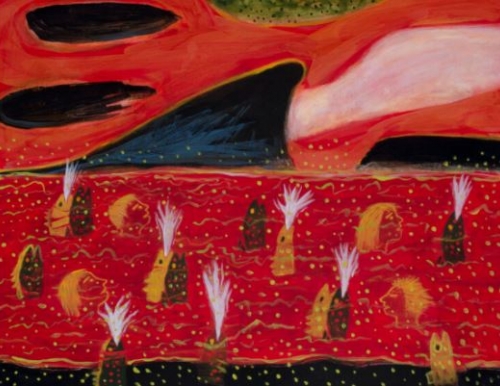Explore a two-part virtual exhibit titled Critters: Mythical Real & Imagined curated by Honors Graduate, Ilana Welch 21′

“From the first cave paintings of bison, horse, and deer over 40,000 years ago, animals have continuously been a significant part of the world’s visual history. Whether it’s a Grecian urn or a Renaissance painting or a modern-day meme, animals have always held a fascination for people. From the very beginning, humans and animals have been interconnected, be it as food, pets, or gods.
Animals have often held symbolic meanings, from representing ideas to representing gods. Ancient cultures, such as Ancient Egyptian and Ancient Greek cultures as well as indigenous peoples, frequently depict their gods and spirits in animal forms. What an animal signifies depends upon the culture. For example, the Western view of owls symbolizes wisdom and scholarly pursuits, while Native Americans and Africans associate owls with bad omens and death.
During the Middle Ages, compendiums of beasts called Bestiaries were handcrafted by monks detailing exotic beasts. The monks creating these volumes had never seen the animal they depicted, often interpreting second or third-hand accounts of exotic animals such as giraffes and rhinoceroses, transforming them into fantastic re-imaginings. In these books, elephants ended up looking like anteaters with tusks, while rhinoceroses were depicted wearing literal armor.
Artists were not always constrained by reality; mythical beasts such as griffins, unicorns, and dragons populate just as many artworks as their real counterparts. Just as varied as their symbolic meanings, the physical descriptions of animals (real and imagined) differ from culture to culture or person to person. Animals, mythical, real, and imagined, have remained a prominent subject for artists throughout the ages. This exhibit will explore animals — mythical, real, and imagined– through various artistic interpretations.”
-Ilana Welch
Be sure to check out both exhibits on the Portland Public Library website!

